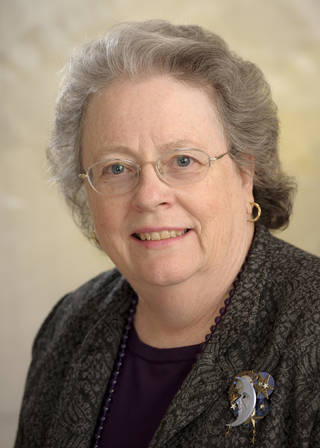SOFIA Telescope Project Faces Hurdles
NASA's SOFIA--the Stratospheric Observatory for Infrared Astronomy--promises unique scientific and educational opportunities. SOFIA is a flying observatory: a highly modified Boeing 747-SP that will carry a 2.5 meter telescope to the stratosphere to conduct infrared astronomical observations that are impossible from ground-based observatories because of the water and carbon dioxide in Earth's atmosphere. As Professor Charles Townes, Nobel Laureate, co-inventor of the laser, and infrared astronomer, states "Adequately supported, SOFIA can be the world's leading far-infrared and sub-millimeter observatory for much of the next 20 years."
On Monday, Feb. 7, USRA and L-3, the subcontractor who modified the aircraft, announced that the external aircraft modifications were complete with the telescope installed. Flight-testing is scheduled later in this calendar year. This is good news.
The same day, NASA Administrator Griffin announced the proposed agency budget for FY 2007 SOFIA has zero funding from 2007 onward. This is not good news for SOFIA, nor for the U. S. and German scientific, technological and educational communities.
There is a caveat in the NASA budget announcement: "As a result of ongoing cost growth due to technical and schedule problems, NASA will conduct a review of the SOFIA project in early 2006 and coordinate the Agency's analysis and position on SOFIA with the German Aerospace Center (DLR) according to the Memorandum of Understanding between the two agencies. This review will allow NASA to determine the best course of action, given the project's status as well as competing science requirements." (NASA Budget: SAE SMD 1-4, and SAE SMD 3-23)
SOFIA has been under development by NASA and its international partner, the German Aerospace Center (Deutschen Zentrum für Luft- und Raumfahrt or DLR) since 1996. NASA provided the aircraft and modifications through prime contractor Universities Space Research Association (USRA), and Germany constructed the telescope. Roughly, the U. S. funded 80% and Germany 20% of SOFIA's cost with the intent of a long-term partnership to operate the observatory together over the next two decades. SOFIA will conduct excellent scientific research and perform as a test bed for new detectors and instruments that ultimately will fly in space. But, only, as Dr. Townes noted, with adequate support.
Beyond its scientific promise, SOFIA is a research observatory that can enhance the quality of science, engineering and technology education, and strengthen the U. S. workforce. Like its predecessor, NASA's Kuiper Airborne Observatory (KAO), which operated for more than two decades, SOFIA is accessible. Undergraduate and graduate students in astronomy, engineering, computer sciences, systems engineering and affiliated fields will be engaged in designing and constructing instruments as well as planning and conducting research missions.
More than fifty scientists obtained their PhDs with data collected onboard the KAO. These scientists have gone on to productive careers with NASA space missions, at research universities, and in industry. Even before its maiden flight, SOFIA's instrument design and construction has resulted in at least six new PhDs at affiliated research universities that are developing instruments for SOFIA. Over its projected lifespan, SOFIA will be an important training facility for scientists, engineers and technologists who will join the workforce pipeline supporting NASA's future space missions.
Breaking space news, the latest updates on rocket launches, skywatching events and more!
The pipeline to NASA careers begins before college. Several recent reports have noted the decline in the number of US citizens selecting science, technology, engineering and mathematics (STEM) undergraduate majors. K-12 teachers make a difference in their students' career choices. I recently received a letter from a teacher who flew on the KAO. As a result of her teacher's experiences with NASA, a third-grade girl decided to "work for NASA" when she grew up, and was now studying robotics in college. Teachers make a difference, and SOFIA promises a unique opportunity to enhance the quality of science and mathematics teachers in America.
In the recent National Academies (Science, Engineering and Medicine) report to Congress, "Rising Above the Gathering Storm: Energizing and Employing America for a Brighter Economic Future", the top priority is to "recruit ten thousand teachers, educate ten million minds" to:
- Increase America's talent pool by vastly improving K-12 mathematics and science education,
- Strengthen two hundred fifty thousand teachers' skills,
- Inspire students every day, and
- Enlarge the pipeline.

Edna DeVore is a science and astronomy educator and the former Director of Education and Public Outreach for the SETI Institute. She earned an undergraduate degree from the University of Pacific followed by a master's degree in instructional technology from San Jose State and a master's in astronomy from the University of Arizona. In 1992, Edna joined the SETI Institute, where she wrote features on space exploration, astrobiology and more, some of which appeared on Space.com. She was among the first principal investigators to propose projects to NASA's Office of Space Science and receive funding for educational programs. Edna went on to work on education and public outreach for NASA's Kepler space telescope and SOFIA flying telescope missions. Edna received numerous awards during her tenure at SETI, including NASA Honor Awards for her work on Kepler and SOFIA, and Aerospace Awareness Award for Women in Aerospace in 2005. Edna retired in 2013.
